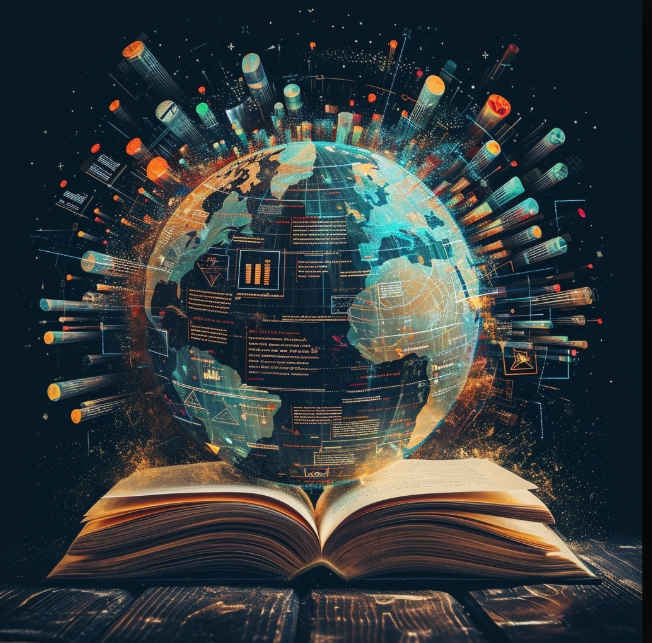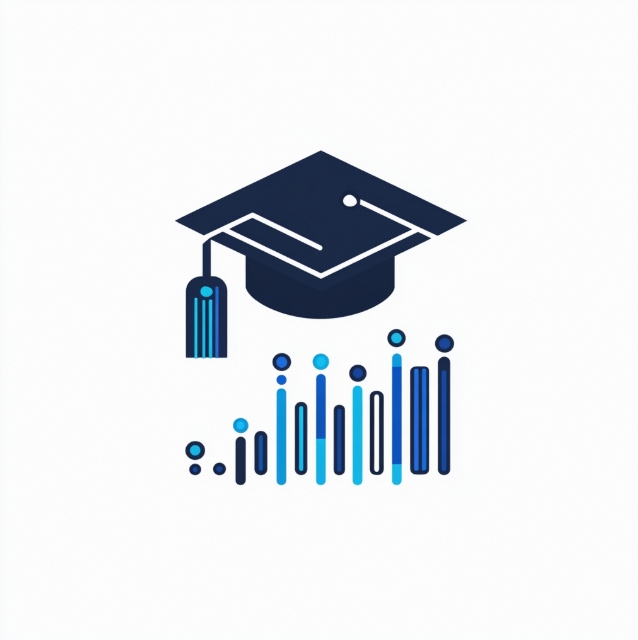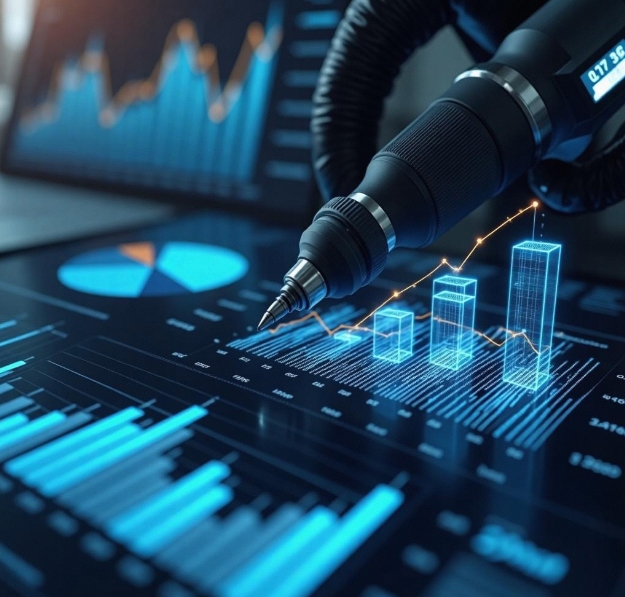Education Industry Solutions: Technology Empowering the Future of Education
- latest articles
- 1.DApp Development & Customization: Merging Diverse Market Needs with User Experience 2.Analysis of the Core Technical System in DApp Project Development 3.How to achieve cross-chain interoperability in Web3 projects? 4.How does the tokenization of points reconstruct the e-commerce ecosystem? 5.How to Set and Track Data Metrics for a Points Mall? 6.What is DApp Development? Core Concepts and Technical Analysis 7.Inventory of commonly used Web3 development tools and usage tips 8.Development of a Distribution System Integrated with Social E-commerce 9.Six Key Steps for Businesses to Build a Points Mall System 10.What is DApp Development? A Comprehensive Guide from Concept to Implementation
- Popular Articles
- 1.Future Trends and Technology Predictions for APP Development in 2025 2.Analysis of the DeFi Ecosystem: How Developers Can Participate in Decentralized Finance Innovation 3.From Zero to One: How PI Mall Revolutionizes the Traditional E-commerce Model 4.DAPP Development | Best Practices for Professional Customization and Rapid Launch 5.Recommended by the Web3 developer community: the most noteworthy forums and resources 6.From Cloud Computing to Computing Power Leasing: Building a Flexible and Scalable Computing Resource Platform 7.How to Develop a Successful Douyin Mini Program: Technical Architecture and Best Practices 8.Shared Bike System APP: The Convenient Choice in the Era of Smart Travel 9.How to Create a Successful Dating App: From Needs Analysis to User Experience Design 10.From Design to Development: The Complete Process of Bringing an APP Idea to Life
Introduction
Education is one of the core pillars of societal development, impacting a nation's future, economic growth, and individual development. However, traditional education models face numerous challenges, including unequal resource distribution, inefficiency, and inconsistent educational quality. With the rapid advancement of technology, digital transformation has become a key pathway to addressing these issues. Modern educational technologies, such as Artificial Intelligence (AI), Big Data, Virtual Reality (VR), and online education platforms, are driving profound changes in the education sector.
This article will explore the main challenges currently facing the education sector, analyze in-depth how emerging technologies can address these challenges, and ultimately provide a series of innovative educational solutions to help the education system move towards a smarter, more efficient, and sustainable future.

I. Major Challenges in the Education Sector
Although the education sector is developing rapidly worldwide, it still faces a series of urgent problems. The following are some of the most prominent challenges in the industry:
1. Uneven Distribution of Educational Resources
Globally, the distribution of educational resources is highly uneven. Many developing countries, remote areas, and rural regions lack high-quality educational resources, particularly in terms of teaching staff, educational facilities, and technological equipment. Even in some developed countries, educational disparities between urban and rural areas, and between regions, persist. High-quality educational resources are mostly concentrated in large cities, while students in remote areas cannot enjoy equal educational opportunities.
2. Difficulty in Achieving Personalized Learning
Traditional education systems mostly rely on a "one-size-fits-all" teaching approach, where all students learn at the same pace and in the same mode. This teaching method overlooks individual differences among students, leading to some students being unable to adapt to the uniform pace or method. Students who learn faster may feel bored, while those who struggle often cannot keep up with the curriculum, ultimately affecting their learning outcomes.
3. Single Teaching Methods and Lack of Innovation
Although modern education advocates cultivating students' creativity and critical thinking, many classrooms still adhere to traditional teaching methods, where teachers lecture unilaterally and students listen passively. This approach not only neglects the importance of active student participation but also limits the interactivity and diversity of teaching. Innovation in teaching content and methods is relatively slow, leading many students to find traditional education tedious and even develop an aversion to learning.
4. Pressure from Education Costs
As educational demands increase, education costs are rising year by year. Particularly, the cost of higher education continues to climb, increasing the financial burden on students and families. In many countries, especially developing ones, families struggle to afford high tuition fees and other related expenses, thereby limiting some students' access to education. Additionally, due to the slow updating of traditional educational facilities and materials, schools often require substantial financial investment for equipment procurement and upgrades.
5. Low Level of Informatization and Technology Application
Although digital technology has become widespread globally, the level of informatization in the education sector remains uneven. In some regions, schools lack advanced teaching equipment such as smart boards, computers, and projectors. In other areas, even when facilities are adequate, the ability of teachers and students to utilize digital tools is still limited, preventing the full potential of technology from being realized.

II. How Technology is Reshaping the Education Sector
With the rapid development of technologies such as Artificial Intelligence, Big Data, and Blockchain, the education sector is gradually embracing technological transformation. The following are applications of several key technologies that will significantly drive innovation and progress in the education industry:
1. Artificial Intelligence (AI) Empowers Personalized Education
Artificial Intelligence technology can tailor learning plans for each student by understanding their individual needs. AI can analyze students' learning data and adjust content, pace, and methods based on their mastery level and learning behaviors, thereby achieving personalized teaching. The introduction of AI not only alleviates teachers' workload and improves classroom teaching efficiency but also helps students learn in the way that best suits them.
Application Cases:
Intelligent Tutoring Systems: AI-assisted learning platforms, such as Knewton and Squirrel AI, can provide students with customized learning resources, offer real-time feedback on learning progress, and adjust course content based on students' weaknesses.
Automated Assignment Grading: AI-based automated grading systems like Gradescope can save teachers significant time on grading assignments, improve teaching efficiency, and provide personalized feedback to students.
2. Virtual Reality (VR) and Augmented Reality (AR) Enhance Learning Experiences
Virtual Reality and Augmented Reality technologies can provide students with immersive learning experiences, allowing them to understand abstract concepts and complex subject matter more intuitively through virtual experiments, interactive models, and other methods. For example, when studying subjects like science, medicine, and history, VR/AR technology can enable students to "immerse" themselves in historical events, virtual experiments, and human anatomy.
Application Cases:
Virtual Laboratories: Students can enter virtual laboratories via VR devices to conduct experiments in physics, chemistry, biology, etc., avoiding safety hazards associated with traditional experiments and reducing experimental costs.
History and Geography Exploration: AR technology allows students to view historical sites and geographical information from around the world through smart devices, enhancing their spatial understanding and historical perception.
3. Blockchain Technology Ensures Transparency and Security in Educational Credentials
The immutability and decentralization of Blockchain give it great potential in educational credentialing and academic record management. Through Blockchain, students' academic achievements, degree certificates, course completions, and other information can be securely stored and quickly verified across multiple educational institutions. This technology can eliminate the risk of degree fraud and enhance the transparency of academic certification.
Application Cases:
Degree and Credential Certification: Some universities and certification bodies have begun using Blockchain technology to store graduation and degree certificates on the Blockchain, ensuring their authenticity.
Credit Transfer: Blockchain technology enables students to easily transfer credits between different schools, promoting the integration of educational resources across institutions and regions.
4. Big Data Analytics Optimizes Teaching Management and Decision-Making
Big Data technology, by collecting and analyzing data from students' learning processes, behaviors, grades, and other aspects, can provide educational managers with precise decision-making support. This data not only helps teachers assess students' learning progress but also offers comprehensive evaluations of teaching quality and effectiveness for schools and education policymakers.
Application Cases:
Learning Analytics Platforms: Some online education platforms, such as Coursera and edX, use Big Data to analyze students' learning behaviors and provide teachers with insights into student progress and problem areas.
Education Policy Evaluation: By analyzing Big Data, education departments can understand the educational resource needs of different regions, schools, and subjects, thereby formulating more precise education policies.
5. Online Education Platforms Provide Flexible Learning Models
With the development of internet technology, online education has become an important component of the education system. Through online education platforms, students can access course content anytime and anywhere for self-directed learning. Especially for students with limited time or those in remote geographical locations, online education offers a convenient learning pathway.
Application Cases:
MOOCs (Massive Open Online Courses): Platforms like Coursera, edX, and Udacity offer online courses from top universities worldwide, allowing students to learn from institutions like Harvard and Stanford.
Live and Recorded Courses: Teachers can conduct live classes through platforms, enabling real-time interaction with students, or students can choose to watch recorded courses for flexible learning.

III. Implementation Steps for Education Sector Solutions
To promote the digital transformation of the education sector, educational institutions can take the following key steps:
Build Smart Education Platforms
Educational institutions should establish integrated smart education platforms by incorporating technologies such as AI, Big Data, and cloud computing to support teaching, management, evaluation, and other aspects, thereby enhancing education quality and management efficiency. The platform should support personalized learning, course resource sharing, real-time feedback, and other functions.
Promote Blended Learning Models
Combine online education with offline classrooms by adopting a "online learning + offline interaction" model to fully leverage the advantages of online education platforms while enhancing classroom interactivity and practicality. This model can flexibly meet students' learning needs and stimulate their interest in learning.
Enhance Teacher Training and Technical Support
Teachers are a key element in educational transformation. Educational institutions need to strengthen teachers' information literacy and technical skills training to ensure they can proficiently use digital tools, understand the potential of educational technology, and effectively integrate it into their teaching.
Promote Smart Campuses and Resource Sharing
Education departments should encourage the establishment of digital educational resource libraries, sharing high-quality teaching resources through platforms to ensure that students everywhere can access high-quality education. Simultaneously, efforts should be made to promote the construction of smart campuses, achieving intelligent and automated teaching and management functions within campuses.
Optimize Education Evaluation and Feedback Mechanisms
Through Big Data and AI technologies, education departments can establish more scientific and comprehensive student evaluation systems, assessing students based on multiple dimensions such as learning performance and behavioral analysis, thereby providing a basis for personalized teaching.
Conclusion
The education sector is facing unprecedented opportunities for digital transformation. Through the integrated application of technologies such as Artificial Intelligence, Big Data, Virtual Reality, and Blockchain, education models are moving towards greater flexibility, efficiency, and personalization. The empowerment of educational technology can not only improve educational equity and enhance teaching quality but also provide global students with better educational resources. With the continuous advancement of technology, we have reason to believe that the future of education will be more intelligent, globalized, and sustainable.
-

How does artificial intelligence technology transform the operational models of modern enterprises?
In the wave of the digital era, artificial intelligence (AI) technology has tran···
-

How to Utilize Artificial Intelligence for Precision Medicine and Health Management
With the rapid advancement of technology, artificial intelligence (AI) has demon···
-

Integration and Application of Artificial Intelligence and Robotics
In today's era of rapid technological advancement, the integration of artificial···

 Blockchain
Blockchain










